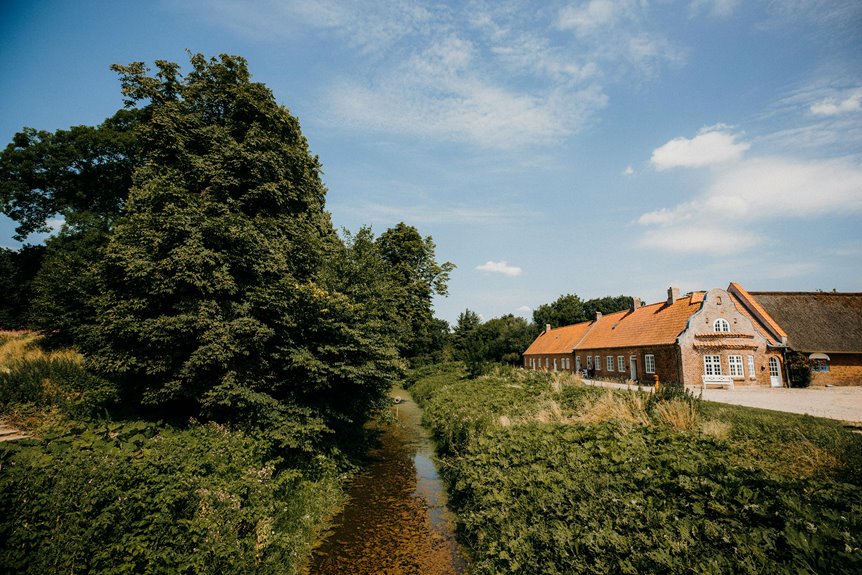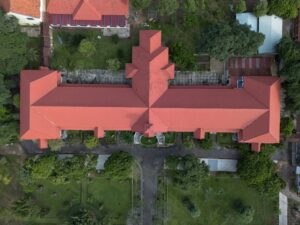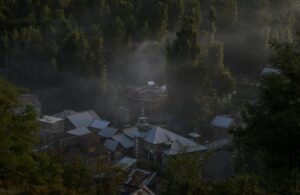Imagine standing beneath a roof that's weathered countless storms yet still stands tall, much like the stories of resilience woven into Destrehan Plantation's walls. As you explore how Synergy Roofing meticulously applies traditional techniques to maintain this historic landmark, consider the broader implications of their work. It's not just about preservation; it's about fostering a deeper connection between the past and present. What does this synergy reveal about our responsibility to cultural heritage, and how might it influence future restoration efforts in similar historical sites?
Key Takeaways
- Synergy Roofing specializes in restoring Destrehan Plantation's roof using historically authentic materials and techniques that respect its 18th-century architecture.
- The company's preservation efforts enhance the plantation's educational value and protect its historical significance on the National Register of Historic Places.
- Collaboration with the River Road Historical Society ensures that restoration adheres to strict preservation standards and historical accuracy.
- Advanced waterproofing methods and regular maintenance extend the roof's lifespan, safeguarding the plantation for future generations to appreciate.
- Community involvement in restoration projects fosters local pride and enhances tourism, contributing to the economic growth of the region.
Historical Importance of Destrehan Plantation
Destrehan Plantation stands as a poignant symbol of Louisiana's complex history, intertwining the legacies of both its owners and the enslaved individuals who worked the land. Established in 1787, it's the oldest documented plantation home in the lower Mississippi Valley and proudly holds a spot on the National Register of Historic Places. This plantation's historical significance extends beyond its architecture; it was the residence of influential figures like Marie Celeste Robin de Logny and Jean Noel Destrehan, who were instrumental in its development.
The plantation's connection to the 1811 Slave Revolt serves as a reminder of the struggles faced by enslaved individuals seeking freedom. Destrehan was also repurposed during the Civil War when the Union Army seized it and created the Rost Home Colony for newly freed slaves, marking a transformative chapter in its legacy. The economic impact of sugar cultivation is evident in Destrehan's history, showcasing the intertwining narratives of plantation owners and the skilled craftsmanship of those who labored there. Preserving this site allows us to acknowledge its complex past and reflect on the ongoing journey toward freedom and justice.
Synergy Roofing's Role in Preservation
When you consider the preservation of Destrehan Plantation, Synergy Roofing's expertise in roofing restoration techniques stands out. By using historically authentic materials and methods, they not only maintain the plantation's architectural integrity but also enhance its educational value. Their collaboration with the River Road Historical Society ensures that every aspect of the project aligns with strict preservation standards.
Roofing Restoration Techniques
How do roofing restoration techniques play a crucial role in the preservation of historic sites like Destrehan Plantation? At Synergy Roofing, roofing restoration is more than just repairs; it's a commitment to maintaining the architectural heritage of this remarkable plantation. By using local materials that match the original construction, you help preserve the authenticity and integrity of the roof.
Advanced waterproofing methods are employed to shield the historic structure from the elements while allowing it to breathe, ensuring long-lasting protection against weather-related damage. The specialized skills of Synergy Roofing's team honor the craftsmanship of the original builders, reflecting a deep respect for the plantation's historical significance.
Moreover, regular maintenance inspections are key to prolonging the lifespan of the roof. By addressing issues before they escalate, you contribute to the ongoing historical preservation efforts at Destrehan Plantation. Your involvement in this process not only safeguards the building but also celebrates its rich legacy. In essence, effective roofing restoration techniques are foundational in keeping the spirit of Destrehan Plantation alive for future generations to appreciate and enjoy.
Historical Material Authenticity
Maintaining historical material authenticity is vital for preserving the integrity of sites like Destrehan Plantation. Synergy Roofing understands that the materials used in restoration must reflect the plantation's original construction methods. This adherence not only sustains the aesthetic appeal but also honors the site's rich heritage.
- Authentic Materials: Local resources from the surrounding swamp and river are prioritized.
- Architectural Integrity: Roofing features maintain the classic French Colonial style.
- Cultural Preservation: Efforts help protect a National Register of Historic Places site.
By sourcing roofing materials that mirror the original construction, Synergy Roofing ensures the plantation's architectural features, like the full double-pitched roof, remain intact. Their commitment to historical preservation is essential for restoring the oldest documented plantation home in the lower Mississippi Valley, established in 1787.
This attention to authenticity is not merely about aesthetics; it's about preserving a narrative that speaks to freedom and resilience. When you choose Synergy Roofing, you're not just opting for a roofing service; you're investing in the legacy of a historical site that embodies significant cultural heritage.
Roofing Techniques for Historic Structures
When restoring historic structures like Destrehan Plantation, using traditional materials is crucial for maintaining historical accuracy. You'll find that techniques employed during the restoration process not only honor the original craftsmanship but also ensure the building's longevity. By prioritizing preservation, you help safeguard the architectural heritage for future generations.
Traditional Materials Usage
In the realm of historic structures like Destrehan Plantation, the choice of traditional materials plays a pivotal role in preserving both the architectural integrity and historical significance of roofing systems. By utilizing authentic roofing techniques, you ensure that each restoration stays true to the plantation's rich heritage.
- Traditional craftsmanship is essential for maintaining authenticity.
- Locally sourced materials contribute to the sustainability of restorations.
- The full double-pitched design enhances drainage and ventilation.
For Destrehan Plantation, this means using materials like wooden shingles or slate tiles, which align with the aesthetics of French Colonial architecture. Such choices not only reflect the design principles from the late 18th century but also promote historic preservation. Builders like Charles Paquet exemplify the high level of craftsmanship required to restore these roofs effectively. By adhering to historical guidelines while incorporating modern preservation techniques, you can create roofing systems that are both functional and visually consistent with the plantation's heritage. Each decision regarding traditional materials impacts the overall integrity of the structure, ensuring that Destrehan Plantation remains a testament to the artistry and history of its time.
Preservation Techniques Employed
Employing historically accurate roofing techniques is crucial for preserving the architectural integrity of Destrehan Plantation. Synergy Roofing takes pride in sourcing local materials that mirror those originally used, ensuring authenticity throughout the restoration process. This commitment to historical preservation reflects a deep respect for the craftsmanship exhibited by the plantation's original builders, like Charles Paquet.
The techniques used are not just about aesthetics; they enhance durability against the demanding Louisiana climate. For instance, traditional wooden shingles, paired with the appropriate underlayment, replicate the original roofing style while providing modern protection. This careful selection of materials and methods maintains the plantation's historical character while addressing contemporary challenges.
Attention to structural support is another key aspect. By utilizing 10 ft. brick piers, Synergy Roofing ensures stability in line with the original architectural design, safeguarding the integrity of the building. Furthermore, the integration of modern preservation technologies allows for advancements without compromising the historical essence. Through these meticulous techniques, Synergy Roofing exemplifies a commitment to preserving Destrehan Plantation, ensuring that its historical significance continues to inspire future generations.
Historical Accuracy Importance
Historical accuracy is vital in preserving the unique character and authenticity of structures like Destrehan Plantation. When you engage in roofing restoration, it's essential to respect the original architectural style, particularly the full double-pitched roof characteristic of French Colonial design.
- Utilize traditional materials that align with original construction methods.
- Incorporate manual craftsmanship that reflects the ingenuity of skilled artisans.
- Consider climate factors to ensure proper ventilation and cooling techniques.
By using locally sourced materials from the surrounding swamp and river, you ensure that your restoration efforts uphold historical accuracy. Emulating the techniques of craftsmen like Charles Paquet not only maintains the integrity and character of the building but also embodies the resilience of the period.
Moreover, addressing climate considerations is crucial—original designs catered to Louisiana's weather, and so should your roofing techniques. By honoring these elements, you contribute to the ongoing preservation of Destrehan Plantation, allowing future generations to appreciate its rich history and cultural significance. Your dedication to authentic restoration ensures that the spirit of the past continues to thrive in modern times.
Community Impact of Restoration Efforts
Restoration efforts at Destrehan Plantation not only preserve its architectural beauty but also invigorate the local community in significant ways. By enhancing local tourism, these projects attract visitors eager to explore Louisiana's rich history and captivating architecture. This influx of tourists benefits the community economically, creating job opportunities for local craftsmen and laborers, which fosters economic growth in the Destrehan area.
Moreover, the collaboration between Synergy Roofing and the River Road Historical Society exemplifies a commitment to heritage conservation. Together, they ensure that the plantation's historical features are maintained, contributing to a legacy that future generations can appreciate. These restoration projects also support educational programs, allowing visitors to learn about the cultural significance of Destrehan Plantation and its place in history.
The synergy between preservation and community engagement is evident. As the plantation's historical integrity is upheld, it becomes a beacon of local pride, promoting a deeper understanding of the area's heritage. Ultimately, these restoration efforts not only protect the past but also empower the present, creating a vibrant community that values its history while looking toward a prosperous future.
Visitor Experience at Destrehan Plantation
At Destrehan Plantation, you'll find an immersive experience that brings Louisiana's rich history to life. Nestled along historic River Road, this plantation offers you a unique opportunity to explore its fascinating past through various engaging elements.
- Guided audio tours in multiple languages enhance accessibility and understanding.
- Discover stunning historical architecture that reflects the plantation's evolution over the centuries.
- Dive into the cultural heritage of Louisiana, covering distinct periods including the French and Spanish Colonial eras.
Your visitor experience is enriched by these tours, which provide a comprehensive understanding of Destrehan's historical significance, from its antebellum sugar baron days to the Civil War. As you wander through the lush grounds, you'll appreciate the intricate details of the architecture and the stories they tell. The plantation's commitment to preserving its history is evident in its educational programs and special events, which invite you to engage with its cultural context. Destrehan Plantation is not just a destination; it's a journey through time that allows you to connect with the vibrant history of Louisiana. Don't miss the chance to immerse yourself in this remarkable experience!
Educational Programs and Outreach
Through a series of thoughtfully designed educational programs, Destrehan Plantation invites visitors to engage deeply with its multifaceted history. Operated by the River Road Historical Society, these programs focus on the plantation's legacy while emphasizing the narratives of enslaved individuals. By participating in interactive experiences, you can explore the complex social dynamics of plantation life and its profound impact on the region's history.
Destrehan Plantation offers a variety of tours, each providing historical insights that enrich your understanding of the site. Special events throughout the year foster community involvement and celebrate the rich culture tied to the plantation's past. To ensure accessibility, audio tours are available in multiple languages, including French, Spanish, German, and English, allowing a broader audience to appreciate the historical context.
The commitment to preservation and education at Destrehan Plantation reflects a dedication to honoring the past while fostering a dialogue about its significance. Through these educational programs, you're not just a visitor; you're part of a living history that seeks to enlighten and engage everyone who steps onto the grounds.
Future of Destrehan Plantation
The future of Destrehan Plantation hinges on a commitment to ongoing preservation and education, ensuring that its rich history continues to resonate with visitors. This dedication is crucial for maintaining the plantation's historical architecture and cultural significance as the oldest documented plantation home in the lower Mississippi Valley.
- Engaging Educational Programs: Expanding tours and workshops to deepen understanding of both free and enslaved individuals' narratives.
- Community Involvement: Encouraging local participation in preservation efforts to foster a sense of ownership and pride.
- Funding Initiatives: Developing fundraising strategies to support restoration projects and enhance visitor experiences.
With the River Road Historical Society's efforts to restore dependency buildings, Destrehan Plantation remains a vital part of the community's heritage. Increasing social media engagement helps raise awareness and encourages broader discussions about Louisiana's historical narratives. As you support these initiatives, you're not just preserving a site; you're safeguarding a legacy. The interplay between preservation efforts and educational outreach will ensure Destrehan Plantation thrives, inviting future generations to explore and appreciate its profound stories. Together, we can secure a future where history isn't just remembered but actively celebrated.
Frequently Asked Questions
Who Was the Owner of the Destrehan Plantation?
The Destrehan Plantation's ownership began with Robin de Logny, who commissioned its construction in 1787. After his death, his daughters inherited it, notably Celeste and her husband, Jean Noel Destrehan. Their transition to sugar cane cultivation significantly impacted the plantation economy and reflects the historical significance of Destrehan architecture. This story embodies the Destrehan legacy, illustrating antebellum life on Louisiana plantations and underscoring the importance of cultural heritage and historic preservation.
What Was Filmed at Destrehan Plantation?
As the old saying goes, "A picture's worth a thousand words." At Destrehan Plantation, filmmakers capture rich film history through its stunning plantation architecture and cultural significance. You'll find it featured in movies like "The Big Easy" and "12 Years a Slave," which explore antebellum themes and Southern Gothic aesthetics. Documentaries and historical reenactments also utilize this iconic location, showcasing the cinematic storytelling that highlights preservation efforts of Louisiana's heritage.
How Many Slaves Did Destrehan Plantation Have?
At Destrehan Plantation, the number of enslaved individuals fluctuated, starting with 59 in 1792 and decreasing to 56 by 1804. This reflects the plantation's shift in focus from indigo to sugar cane, highlighting the harsh realities of slavery history and its role in the plantation economy. Understanding this legacy through historical documentation and descendant stories is crucial for community involvement and education initiatives, ensuring we address the ethical considerations of our cultural impact.
What Is the Oldest Plantation House in Louisiana?
Imagine stepping into a time capsule, where the echoes of Louisiana history resonate through walls built in 1790. The oldest plantation house in Louisiana is Destrehan Plantation, a stunning example of antebellum architecture that showcases architectural significance and cultural heritage. This historical landmark not only reflects the plantation economy but also plays a crucial role in heritage tourism, inviting visitors to explore the rich tapestry of southern plantations and their lasting impact.




